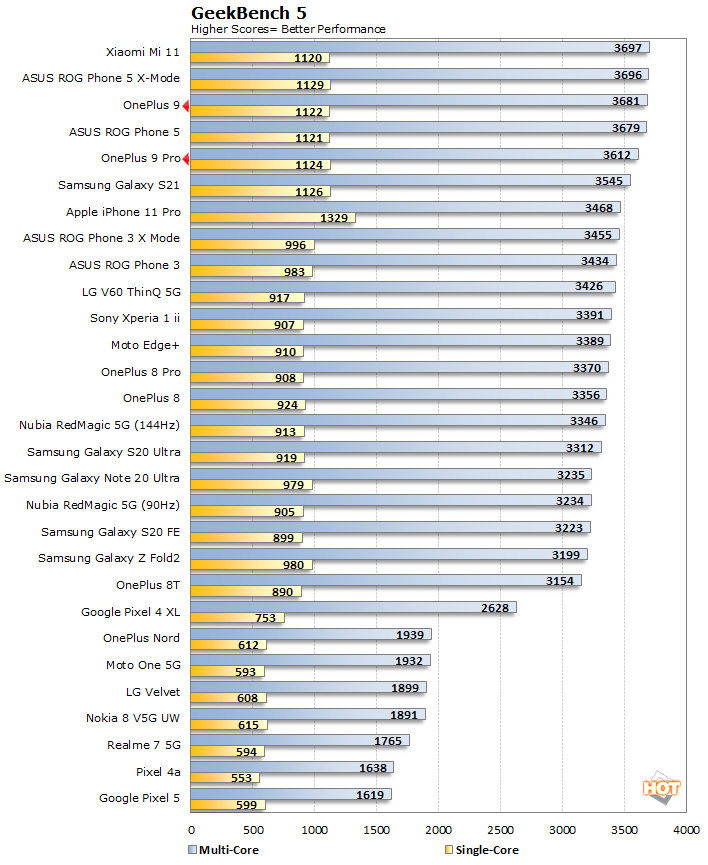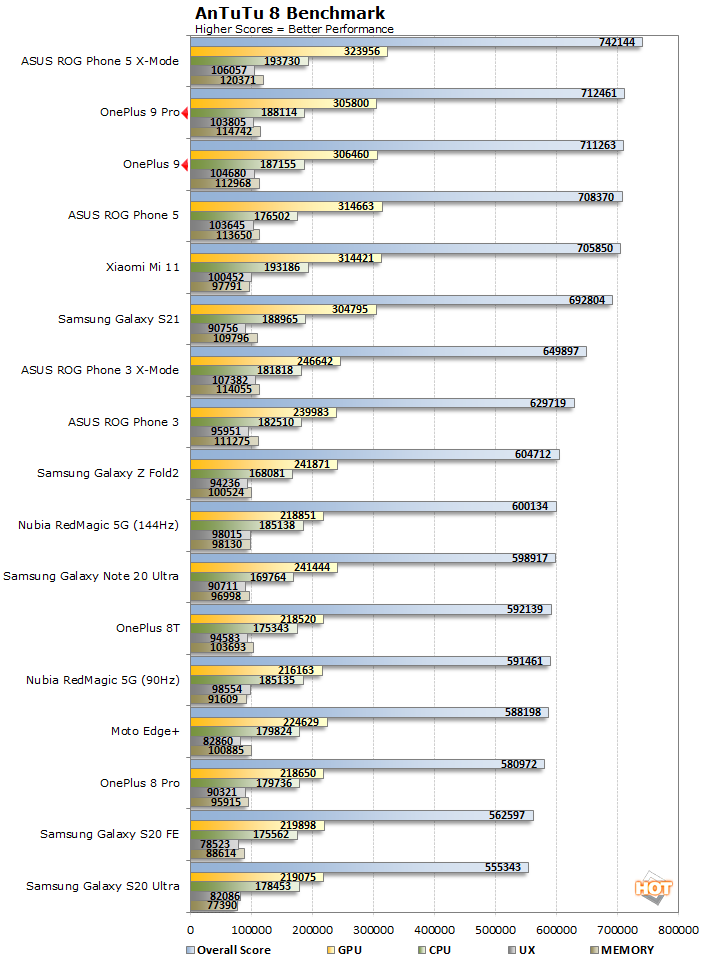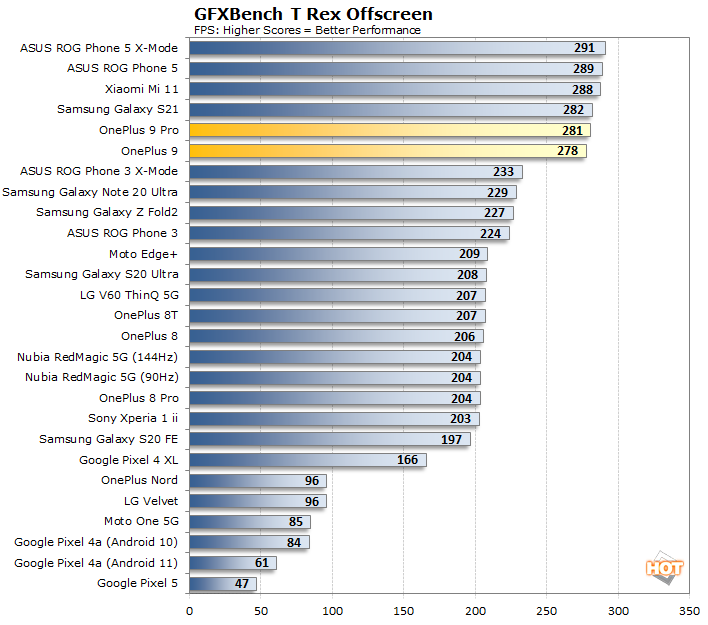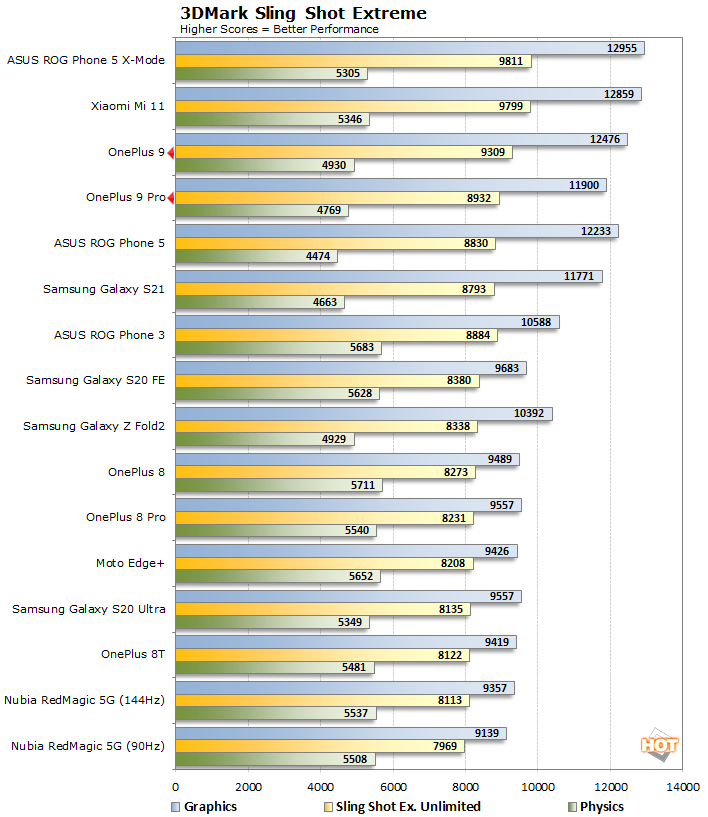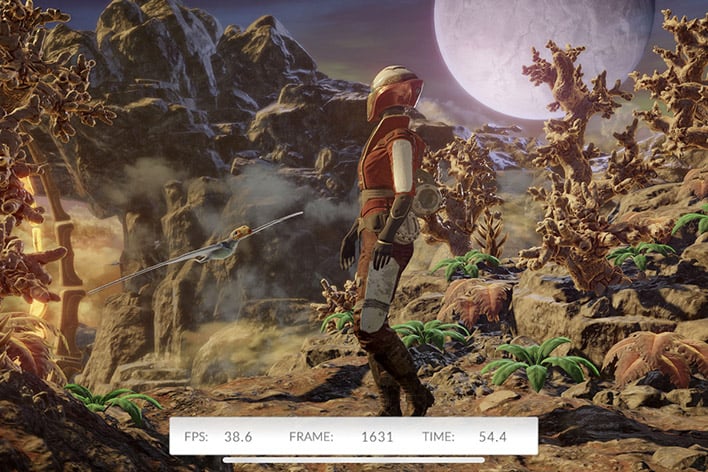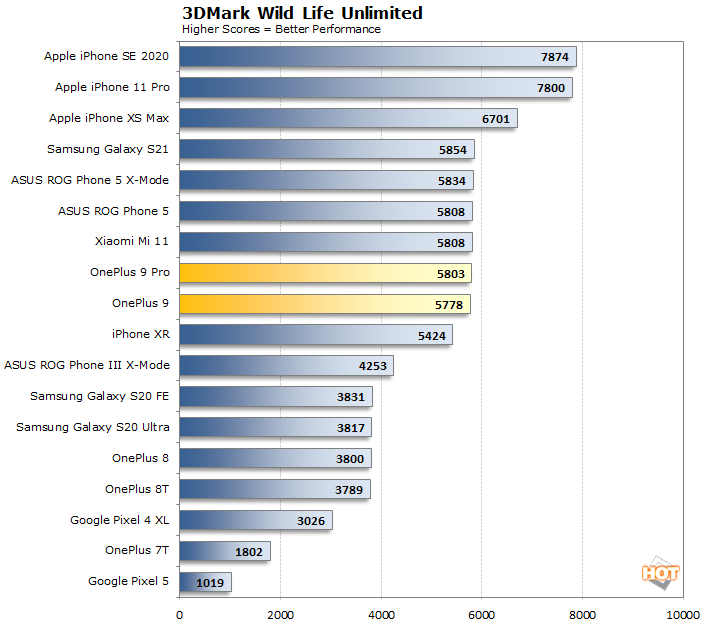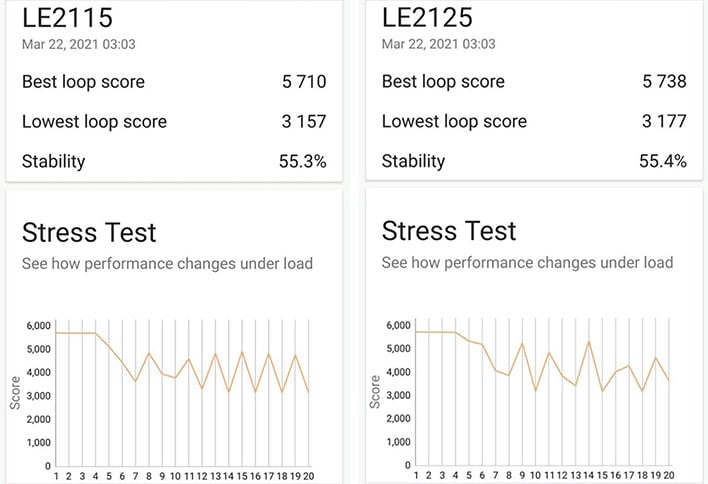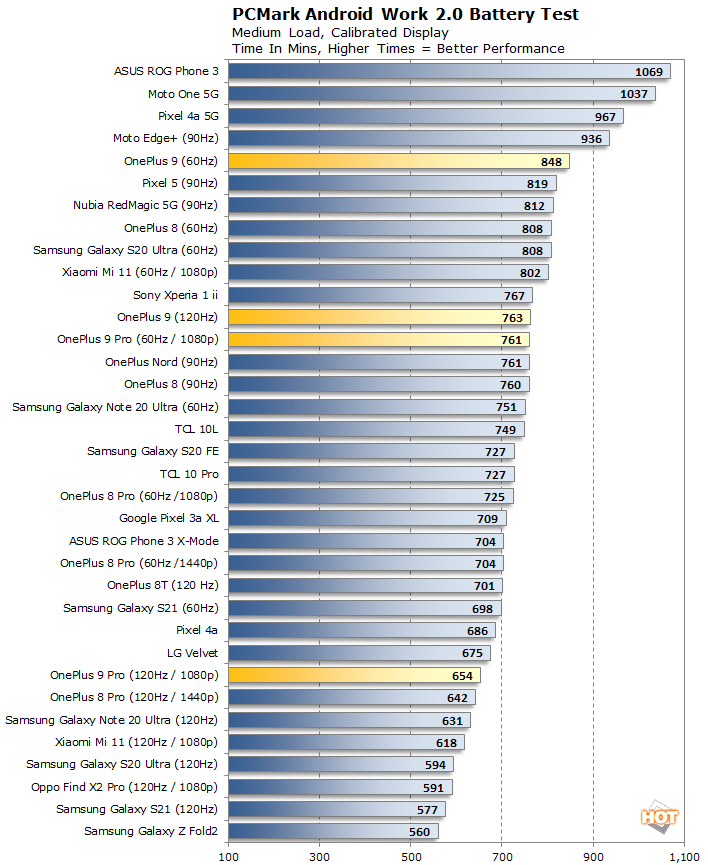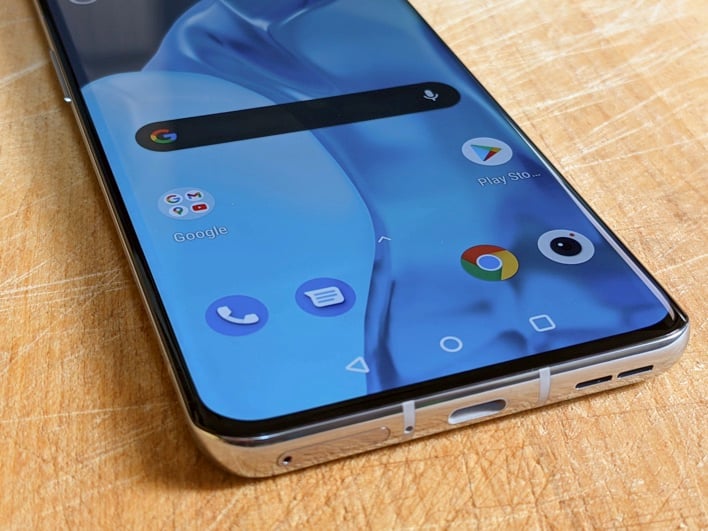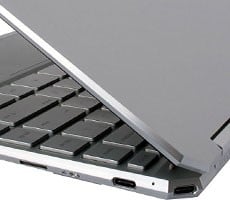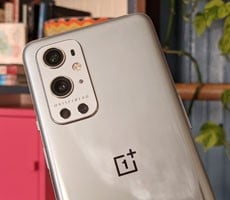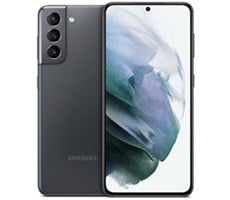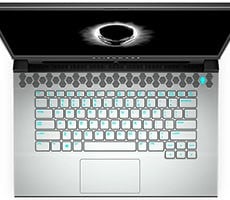We used both handsets on T-Mobile's and AT&T’s networks in and near San Francisco, and didn’t have any issues. Calls sounded loud and clear, and data speeds were on par with other devices on these networks. Unfortunately -- and like the OnePlus 8 series -- the OnePlus 9 only works on T-Mobile’s sub-6GHz 5G network. Same deal with the 9 Pro, with the addition of mmWave 5G for the handful of T-Mobile customers in compatible service areas.
OnePlus 9 Series Audio, Data, and Call Reception
 OnePlus
9 ports
OnePlus
9 ports
AT&T and Verizon customers using these
phones will be stuck on 4G LTE -- at least for the time being.
OnePlus is apparently working with Verizon to certify both
devices for its 5G network, but support for AT&T’s 5G
network doesn’t appear likely. And frankly, this is disappointing,
considering most current unlocked devices from Apple, Samsung,
and Google support 5G networks for the vast majority of US
carriers.
 OnePlus
9 Pro ports
OnePlus
9 Pro ports
On the audio front, both handsets feature great-sounding stereo
speakers with Dolby Atmos, and incorporate
Qualcomm’s WCD9385
audio codec. This chip includes a 32-bit 192KHz DAC and a
quality headphone amp, plus DSD support. Basically, whether you
prefer using wired analog or digital audio devices over USB
Type-C, or enjoy lossless LDAC and aptX HD audio over Bluetooth,
the OnePlus 9 series has you covered.
OnePlus 9 Series Performance
OnePlus is well known for
delivering top notch performance, and the OnePlus 9 series is no
exception. Both phones pair Qualcomm’s flagship SoC, the
Snapdragon 888, with 8 or 12GB of LPDDR5 RAM and 128 or 256GB
of UFS 3.1 storage (but no microSD support). Add an ultra smooth
120Hz screen plus a highly optimized build of Android 11 (Oxygen
OS 11) to the mix, and you have a serious recipe for speed.
These handsets feel fast, no matter what you’re
doing. Whether you’re sorting through emails in Spark, posting a
story on Instagram, meeting with friends on Zoom, or fragging
away in Call of Duty, everything just seems to happen instantly.
Our benchmarks place both devices squarely in the middle of our
Snapdragon 888 charts, but unfortunately, sustained performance
exhibits some throttling (see below).
 |
| Geekbench 5 |
| Synthetic CPU
Benchmark |
|
GeekBench isn't our favorite
benchmark, as it's purely synthetic and can be heavily
targeted for optimization. Regardless, the Snapdragon 888 processor delivers a noticeable improvement in single thread performance and a marginal improvement in multi-threaded performance over previous generation
Snapdragon 865-equipped Android flagships. The OnePlus 9 and 9 Pro both beat the
Galaxy S21 and the OnePlus 9 beat the ROG Phone 5 in multi-threaded performance.
 |
| Futuremark
PCMark For Android |
| General Purpose Pocket
Computing Performance Metrics |
|
Futuremark's PCMark for Android
is an excellent suite of tests if you want to benchmark a wide
range of tasks on any handset -- things like image and video
editing, as well as lighter-duty, everyday workloads such as
email and web browsing. When you see the test running live,
it's clear the scripted application tests are carefully
selected and tuned to make use of the each mobile platform in
a very controlled way...
Here both handsets show similar performance to previous generation flagships, with the OnePlus 9 falling just behind the
Galaxy S20 FE and the 9 Pro falling just behind the
OnePlus 8 Pro. The Galaxy S21 performed better on this benchmark.
 |
| AnTuTu
8 |
| Platform Benchmarks |
|
AnTuTu’s latest benchmark returns a number of metrics
ranked with somewhat nebulous scores, rather than frame
rates or time to complete. Here we're running the latest
version of AnTuTu across multiple Android devices. AnTuTu
returns four top level performance results which are all
included here: CPU, RAM, 3D, UX (or User Experience), along
with a total score...
According to AnTuTu, The OnePlus 9 and 9 Pro offer a significantly more substantial increase in performance vs. previous generation Android handsets, beating the Galaxy S21 in all but the CPU test, and beating the
ASUS ROG Phone 5 in overall score.
 |
3D
Graphics Benchmarks: GFXBench and 3DMark Sling
Shot
|
| Pushing The Pixels |
|
Next we're checking how the
OnePlus 9 series compares in GFXBench, which has been one
of the standard mobile graphics/gaming performance benchmarks
for years. To ensure that display refresh (v-sync) and
resolution aren't limiting factors, we're comparing off-screen
test results here. GFXBench tests OpenGL ES graphics workloads
and we're specifically testing OpenGL ES 2...


Now we're seeing the kind of performance improvement we expected from the Snapdragon 888-equipped OnePlus 9 series. These new phones clearly beat Snapdragon 865-powered devices, and comes out near Samsung's Galaxy S21.
Futuremark's 3DMark Sling Shot is a newer benchmark module
that's been added to the 3DMark mobile suite. Unlike previous
gen 3DMark mobile tests, Sling Shot is a much more advanced
OpenGL ES 3.1 and Metal API-based benchmark that employs more
advanced rendering techniques, like volumetric lighting,
particle illumination, multiple render targets, instanced
rendering, uniform buffers and transform feedback.
 3DMark Sling Shot Extreme Benchmark
3DMark Sling Shot Extreme Benchmark
We're running this test in off-screen mode once again to
remove display resolution differences from the equation.
This lets us compare cross-platform results more
reliably...

Again here we see a more modest improvement to the graphics score over Snapdragon 865-equipped flagships. Still, the OnePlus 9 and 9 Pro perform extremely well in this test, beating the Galaxy S21 and almost matching the Mi 11.
 |
3D
Graphics Benchmarks: 3DMark Wild Life Stress
Test
|
Keeping It Cool
|
|
3DMark Wild Life is the latest cross-platform test from UL. Its primary purpose is to measure GPU performance across platforms, and two distinct tests are available. The standard Wild Life test is designed to give feedback on how a game performs over a short period of time. With mobile games, people typically play in brief spurts when they find some free time; be it on the bus, on the subway, or a quick battle royale session over lunch break. The 3DMark Wild Life Stress Test, on the other hand, shows how a device performs over a longer stretch of time, and takes note of performance degradation that might crop up due to increased heat levels and throttling.


3DMark Wild Life is a significantly more taxing graphics benchmark that employs cutting-edge mobile game engine technologies to deliver impressive visuals -- as you can see in the screen shot above. Here the Snapdragon 888-powered OnePlus 9 series delivers a massive improvement in performance versus some of the fastest Snapdragon 865-equipped devices (Galaxy S20 Ultra and S20 FE), almost matching the Mi 11.
Unfortunately, the OnePlus 9 and 9 Pro do exhibit similar throttling to what we experienced with the Galaxy S21, managing a stability score of just 55.3% and 55.4%, respectively.
 OnePlus 9 stress test (left), OnePlus 9 Pro stress test (right)
OnePlus 9 stress test (left), OnePlus 9 Pro stress test (right)
OnePlus 9 Series Other Features and Battery Life
Looking at the other specs, you’ll find sub-6GHz 5G (SA /
NSA), CAT 20 LTE, dual-band WiFi 6 (802.11ax), Bluetooth 5.2
(LE), NFC, and dual-band A-GPS / GLONASS / Galileo / Beidu
positioning, plus the usual collection of sensors. And of
course, the OnePlus 9 Pro adds mmWave 5G to the list.
Haptics are up to OnePlus’ high standards, and the optical
in-display fingerprint scanner works like a charm (and ditto for face unlock).
Both phones pack 4500mAh batteries divided into two 2250mAh
cells, which enables 65W wired fast charging (Warp Charge
65T). This means 0-100% only takes 29 minutes. In addition,
the OnePlus 9 supports 15W Qi-compatible wireless charging,
while the 9 Pro offers 50W wireless fast charging (Warp
Charge 50 Wireless) -- for a full charge in just 43 minutes
-- plus 5W reverse wireless charging.
Battery life is perfectly fine, but not outstanding. At
1080p and 120Hz, our PCMark battery test clocked in at 12
hours and 43 minutes for the OnePlus 9, and 10 hours and 54
minutes for the 9 Pro. Things are slightly better at 60Hz,
with the OnePlus 9 achieving just over 14 hours, and
the 9 Pro reaching 12.75 hours. Regardless, most
folks should get a normal day’s use on a full charge, and
refills are quick.
BTW, these handsets come with a 65W wired fast charger in
the box (a $35 value), which also doubles as a 45W USB-PD
charger (with PPS). So go right ahead, charge your
MacBook Air with the same charger as your OnePlus 9. And if you want
OnePlus’ proprietary 50W wireless fast charging stand, it
costs $69 but doesn’t come with a brick.
Next up: the software, pricing, and the verdict...
